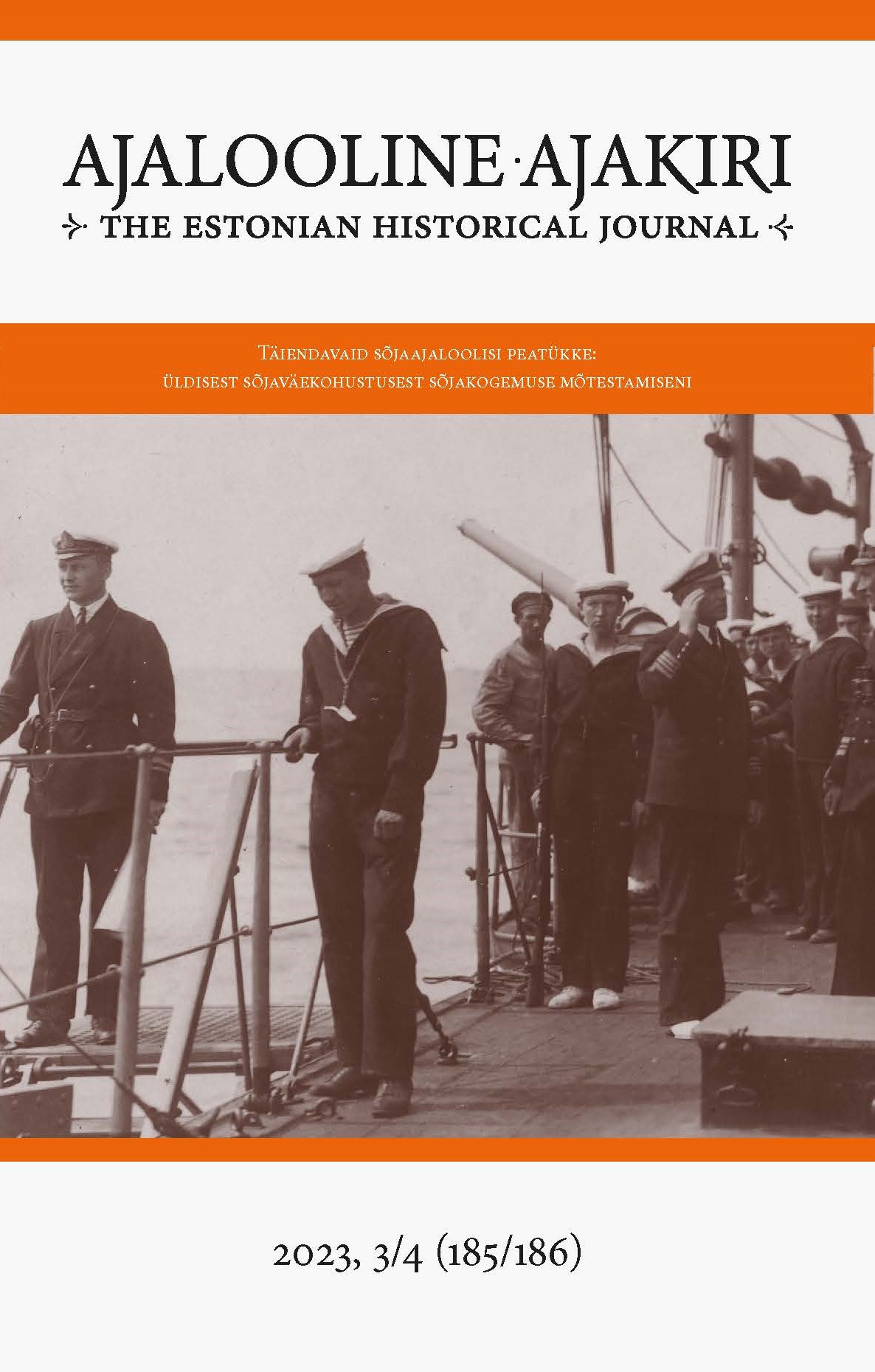4. eesti jalaväepolk (1917–18)
DOI:
https://doi.org/10.12697/AA.2023.3-4.04Keywords:
World War I, Russian revolution, Estonian army units, Bolshevism, Estonia’s statehood, German occupation, I maailmasõda, Vene revolutsioon, Eesti rahvusväeosad, enamlus, Eesti iseseisvumine, Saksa okupatsioonAbstract
4th Estonian Infantry Regiment (1917–18)
Despite Russia being a multi-ethnic empire at the beginning of the 20th century, there were no national units in its armed forces. This changed during the First World War when some minorities (Latvians, Poles, Armenians, Georgians) were granted the right to form national forces. The real breakthrough, however, came after the February Revolution, which gave all the peoples of Russia, including Estonians, the same opportunity.
At the request of the Estonian military, recruitment of Estonians for the regiment to be established in Tallinn began on 12 April 1917. Soon, however, the Russian military authorities put the brakes on, accepting the existence of one Estonian regiment, but banning any further formations. At the same time, more and more Estonian soldiers who wanted to serve in the national army were arriving in their homeland. The First Congress of Estonian Military Personnel held in June requested the establishment of new units. Military failures and the rapid demoralisation of the Russian forces made the authorities more compliant. Between September and October, permission was granted to also form the 2nd and 3rd Estonian regiments and the Estonian Reserve Battalion in addition to the 1st Estonian Infantry Regiment. In December, all Estonian units were merged into the 1st Estonian Infantry Division.
On 6 December 1917, the Commander of the Estonian Division ordered the formation of the 4th Estonian Infantry Regiment and appointed Captain Hendrik Vahtramäe as commander of the regiment. The regiment was initially stationed in Rakvere, where two battalions and a number of smaller subunits were formed. A month later, the previously established Estonian Battalion in Paide was merged with the regiment. From then on, part of the 4th Estonian Infantry Regiment was deployed in Rakvere and part of it in Paide, whereas the smaller subunits were billeted in the manors and villages of Viru and Järva counties.
Since source materials are scarce, it is unclear to what extent the 4th Estonian Infantry Regiment was completed, but it certainly did not become a combat-capable unit. There was a shortage of both military personnel as well as equipment and weapons. Furthermore, ever-intensifying politicisation and the consequent decline in discipline had an impeding effect. The regiment was being formed while the Bolsheviks, who had seized power, were expanding their influence. Therefore the armed forces had to take serious action to repel Bolshevism. Protecting the civilian population from the lawlessness of demoralised Russian soldiers (killings, arson, robberies, etc.) became another important area of activity for the regiment. The regiment played a significant role in the last days of February 1918 when it helped overthrow the Bolsheviks and establish independent Estonian statehood.
By the beginning of March, the entire territory of Estonia had fallen under German military occupation. Although the Germans refused to recognise Estonian statehood, the existence of national military units was tolerated for some time. The Estonian military tried to make the most of the opportunity by transforming the former 1st Estonian Infantry Division into the Estonian Army. The Army also included the 4th Estonian Infantry Regiment, which was still deployed in Rakvere and Paide and continued its recruiting and training activities. However, on 20 March, General Adolf von Seckendorff ordered the Estonian national military units to be disbanded. At the beginning of April, the short existence of 4th Estonian Infantry Regiment was terminated.
Even though the history of the 4th Estonian Infantry Regiment covered only four months, its importance was considerably greater. In November of 1918, when the Estonian War of Independence broke out, the men who had served in the 4th Estonian Infantry Regiment answered the call-up once more and were among the first to defend their homeland.
Downloads

